Let’s look at the function more closely to get a better overview of the features
Feature overview
Starting on the top left corner with the frequency knob that set the LFO speed of the device. This LFO is hardwired to the modulate delay time and an additional LED indicates a simple way the speed of the LFO. I would have for the LFO still a switch desired with which one can turn it on and off. Than we have the colour knob. The moment where you turn on the device for the first time, it’s a somewhat strange knob because you have on the left side a printed moon symbol and on the right a sun. First, you ask yourself what exactly this knob does but when you think further than the moon describes a dark sound and the sun a brighter. From this, one can in the end conclude that this feature can be a filter. If you play with it and look at the manual, you will receive the confirmation about your first idea. It’s effectively a full analog lowpass filter that works on the output signal.
A clever feature because often you get a very aggressive sound from this device. With a slight turn to the left, you can filter them out and make them more softer or suitable for your music production.Using the filter, you get quickly very nice fat dark bass sounds out of this machine. But if you like these dirty and gritty sounds, you will use certainly less this filter function. Next, we have an distinct germanium diode overdrive that goes to the signal that passes through the vacuum tube. The overdrive is one of these features in the Fusionbox, you should be careful with. If you turn the knob to much, everything drags very extreme and the whole audio develops to a great noise flooding. I mostly put the overdrive in my tests so that only a little bit of distortion goes in the sound character so that gives you already this nice dirty sound to it. With the modulation knob, you can adjust the desired delay time modulation.
Continue in the middle where you have switch for the short and long delay. Good to know, the long delay mode can work with up to 800ms. During my test, I was particularly pleased with the short delay mode. Here, you can achieve flanger-like effects, but also convert the audio material that it sounds like a physical modelling Synthesizer. With a small portion of overdrive, the whole thing sounds super exciting. Please check my video review (4:57) where I give you a short sound demo how this sounds in a combination with a Arturia Minibrute analog Synthesizer.
However, you must not forget the charm of the long delay mode. This one is also very versatile but harder to control in my opinion. For example, if you go in the details, you can setup the delay of the Fusionbox that it sounds like a reverb. It sounds very own and unique. You find also in my video review an sound example with the KORG Monologue analog Synthesizer with this setting.
With the two delay modes, you have a lot of room for interesting sounds. By noodling around, you find constantly new interesting characteristics of this device. Than beside the delay mode switch, you have a bypass switch where you can bypass all effects. This can be also done via an additional footswitch. As already said before, an clever feature for live musicians who don’t have a free finger to turn of the device. On the top right, you have the delay time knob where you adjust manually the delay time. I especially liked to see the delay time to a smaller value that you received more flanger-like sounds. With larger values, the sound sink in the delay storm which can also sound interesting when you have the whole thing under control. This is at the beginning somewhat tricky and not so simple to find the perfect setting. Here, above all, some exercises are required to find the perfect timing. Before you go on the stage with the Fusionbox, you should be able to work with otherwise it will be the master.
The next parameter is very exciting and includes an additional feature which is not explicit written in the description of the device.
The hidden instrument in the Fusionbox
With the Feedback knob, you can set the amount of feedback from zero to self-oscillation. The self-oscillation is here the point. Reaching this point, the Fusionbox transforms into a feedback loop instrument. For many musicians certainly, it’s not the most exciting feature but experimental and noise oriented musicians will have a lot of fun with this. On the basis of the feedback, I turned the device into a self-oscillating instrument which can create very nice and aggressive noise walls. If you use the other features: overdrive, filter and LFO, you get nice textures in these dirty sounds. Not for everyone but certainly a cool sound design feature. In a video which I have uploaded a few weeks ago, I showed this interesting feature.
In my tests, I noticed that one must be very careful how to handle the feedback. Increasing it to heavier or to fast, the effect becomes quickly unpredictable. Slightly slower start and continue well dosed is my advice here. Than you have also a Dry/Wet knob that adjust the balance between dry and wet signal. What already the manual suggest, the best stereo effects, you receive when the knob is between 2 and 5. This recommendation is right and can confirm this from my tests. Last but not least, you have a knob for the input level. You can hardly believe it, but it can do more in the sound character than only increasing the incoming instrument signal. If you put it higher than 5, you will get interesting tube overdrive effects. These effects are very aggressive and dirty. You can find this tip also in the included well designed manual. Not only the main parameters are there for the sound character but even the Dry/Wet and Input level knobs offers here a great play room for finding and designing your own sounds.

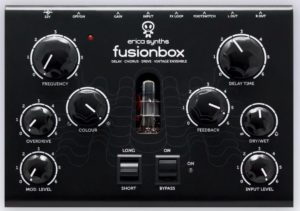
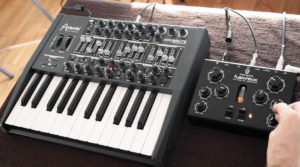
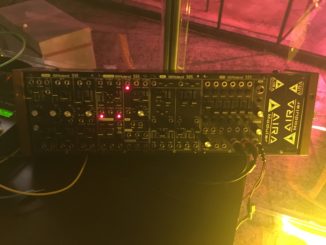
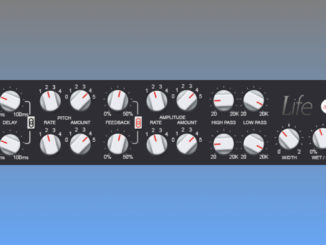
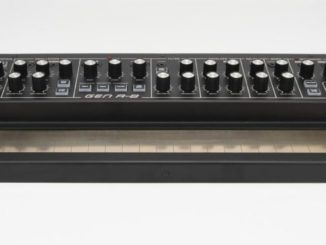
Be the first to comment